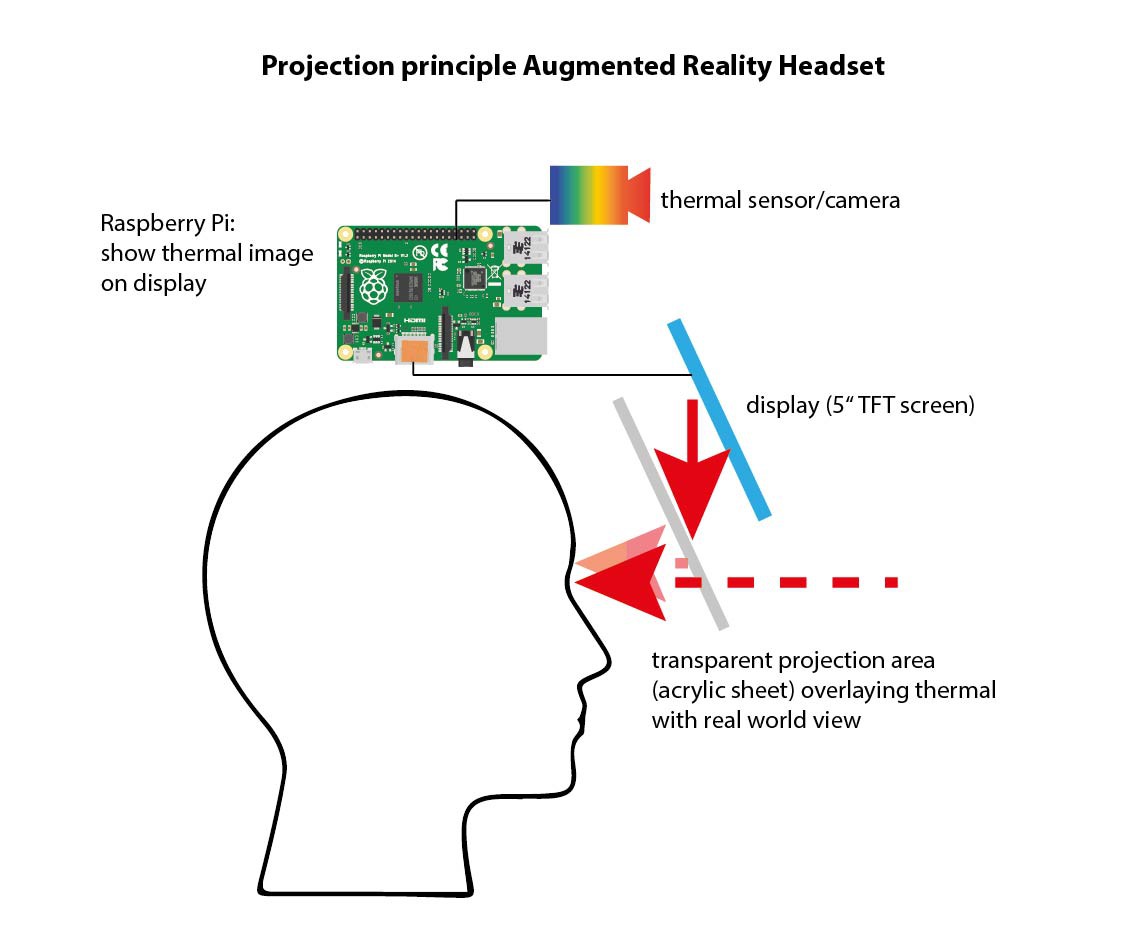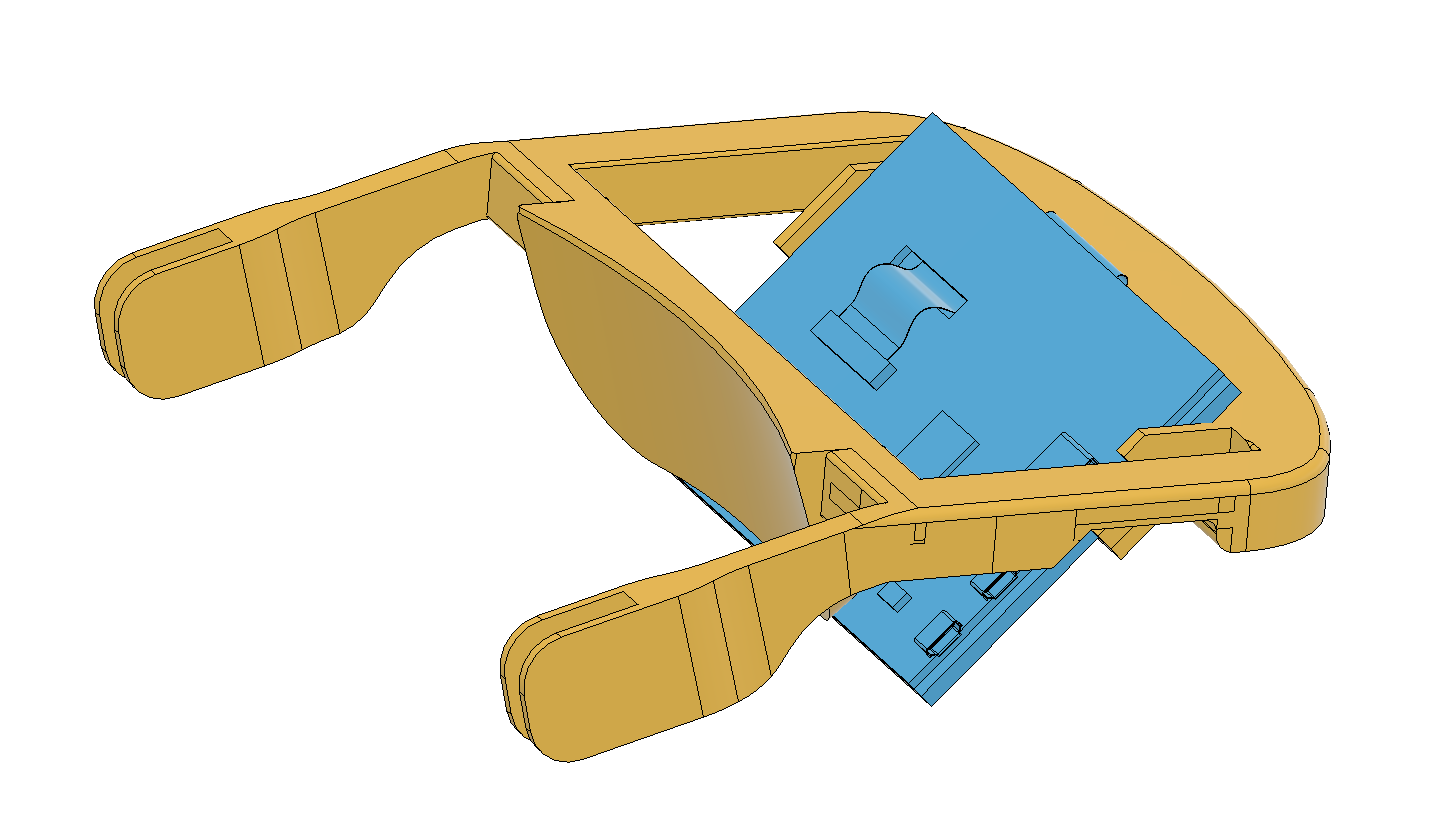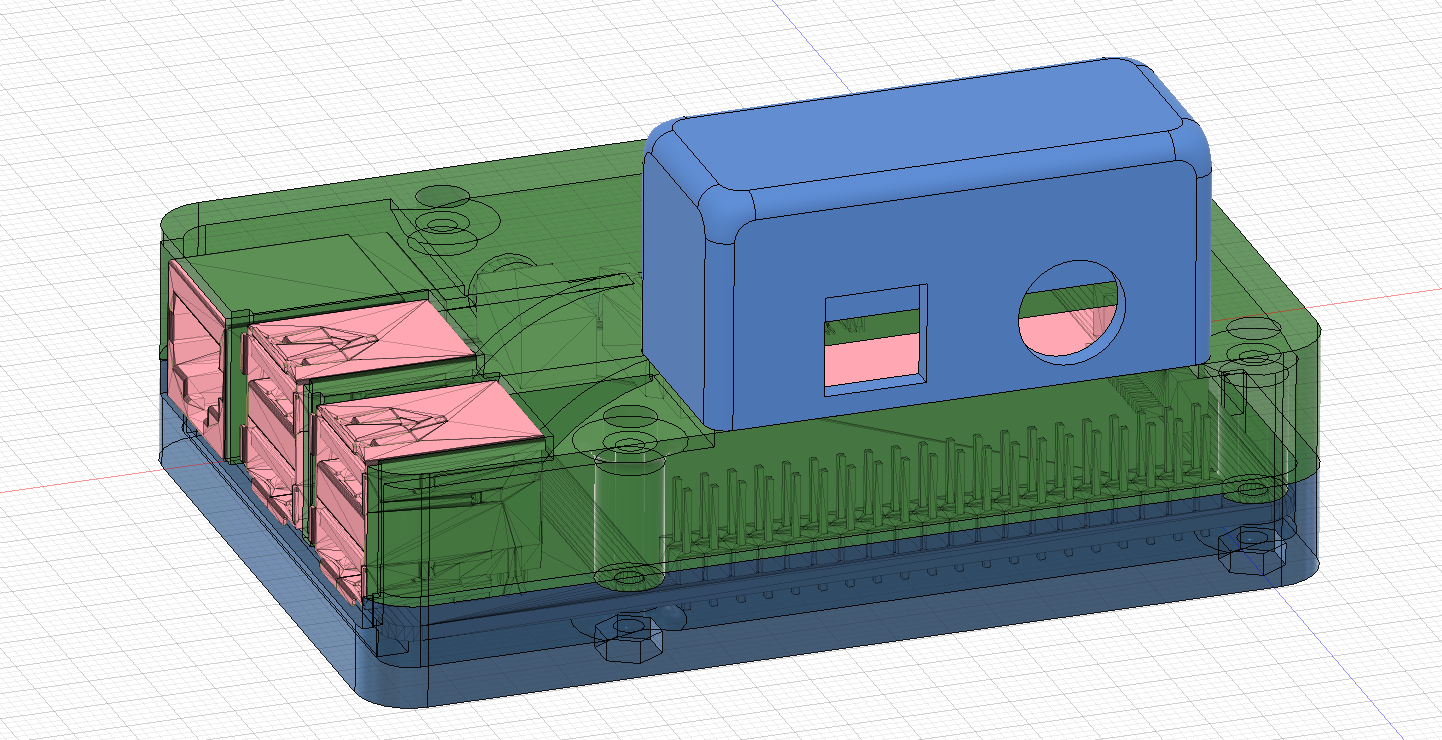The second approach we discuss is the AR headset, which will show the thermal vision for both eyes. Therefore, the display must be mounted in a way to allow reflection from a screen for each eye plus a pass-through of the view to the real world.
This is how it should work in principle:

Similar to AR glasses like hololens, we will have a screen above a transparent acrylic plate - it is just a simpler design with one screen for both eyes and no curved transparent screen - maybe this can be sourced online if you would like to experiment with it :-)...
This design had the same advantage of simplicity - no real-world camera is needed; optics will take care of the overlay between real-world and thermal pictures. This time, our prototype will be attached to the head... and we found a nice 3D design on Cults3D, we used:

The TFT display slides in at the front, the forehead rests against the curved area... this was a big help being able to contribute to this design!
We decided to use a Raspberry Pi case and attach the sensor/thermal module at the top, so both will rest above the display:

Since we decided to build 3 different prototypes - but we only had 2 thermal sensors - we changed this design a bit and included a Raspberry Pi camera module here. It is not needed for the AR setup, but we can use the same hardware setup for the VR version - no need for a second Raspberry Pi and a third thermal camera... we can be a bit "sustainable" even when prototyping :-)
In theory, we could mount the combined Raspberry Pi with cameras on top of this AR-frame (or use it on top of a VR google)...
 Johann Elias Stoetzer
Johann Elias Stoetzer
Discussions
Become a Hackaday.io Member
Create an account to leave a comment. Already have an account? Log In.